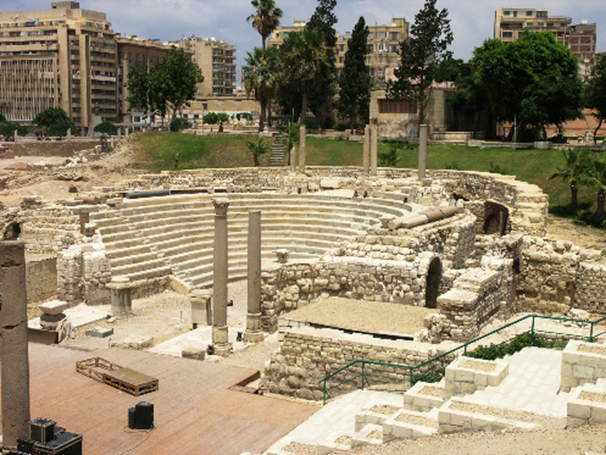Greco-Roman Theater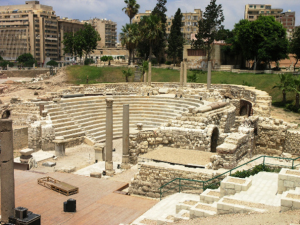
Kom el-Dikka area
The word “Kom” means a mound of rubble from demolished buildings. The word “Dikka” means a seat for sitting.
The Roman Theater at Kom el-Dikka
Its history dates back to the fourth century AD, during the Roman era.
Discovery
It was discovered by chance in 1960. A Polish mission was searching for Alexander the Great’s tomb when they found a number of marble steps. The search continued until the entire area was discovered.
Building Description
• A U-shaped theater.
• Built of stone blocks with 17 limestone columns.
• 13 rows of marble seats, except for the first row, which was made of pink granite for strength as it designed for orchestra .
• A marble-paved stage floor.
• Two square marble pillars on either side.
• The purpose of the marble rows was to organize seating and listening to music, which is why this building was called an ‘odeion,’ a hall for listening to music.
• There is a group of side rooms that are believed to have been used as study rooms. These rooms are considered the best reflection of Alexandria’s role as a leading center for teaching and education
 A photo of the Roman theater in the Kom El-Dikka area, showing the theater’s seating area and some pink granite columns with Corinthian capitals.
A photo of the Roman theater in the Kom El-Dikka area, showing the theater’s seating area and some pink granite columns with Corinthian capitals.
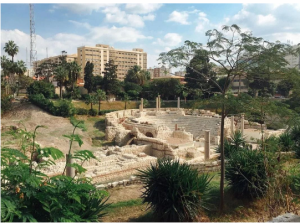
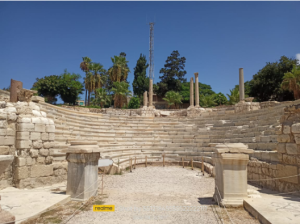 Pictures of the Roman theater in the Kom El-Dikka area
Pictures of the Roman theater in the Kom El-Dikka area
Displayed Artifacts in theater area
A painting depicting King Seti I- A sphinx statue of King Ramses II- A sphinx statue of King Psamtik II of the 26th Dynasty- A painting depicting the head of the goddess Hathor.
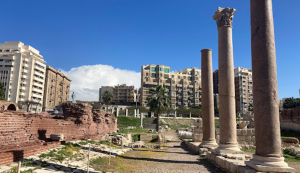 Granite Columns at the Roman Theater of Kom el-Dikka
Granite Columns at the Roman Theater of Kom el-Dikka
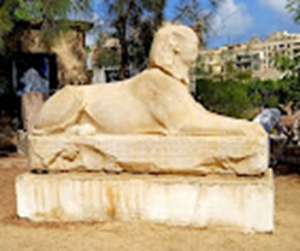 A sphinx statue dedicated to King Psamtik II of the 26th Dynasty
A sphinx statue dedicated to King Psamtik II of the 26th Dynasty
Kom el-Dikka Baths
Built in the 3rd century AD during the Roman era. Renovated twice, most recently in 535 AD, and remained in use until 642 AD. Separate sections for men and women. Considered one of the largest Roman baths discovered in Egypt.
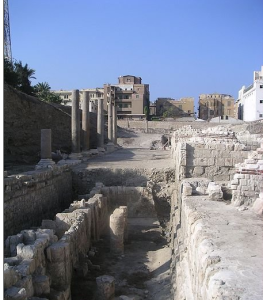 Kom el-Dikka Baths
Kom el-Dikka Baths
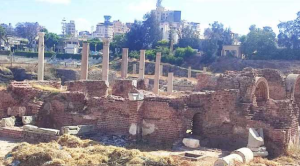 Kom el-Dikka Baths
Kom el-Dikka Baths

Residential Complex in Kom el-Dikka
Society there was characterized by the presence of more than one class: the rich class, the middle class, and the poor class.
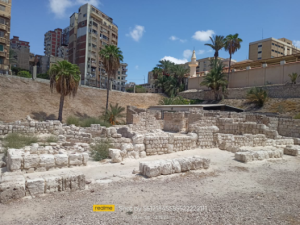
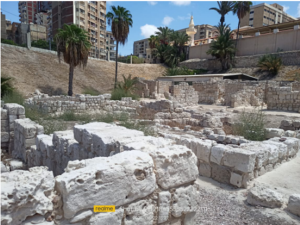 Remains of residential buildings in Kom el-Dikka
Remains of residential buildings in Kom el-Dikka
The Bird Villa
Luxurious villas were the homes of the wealthy in ancient times, and one of the most famous and beautiful of these villas was known as the “Bird Villa.” It was named after the stunning mosaics that adorn its floors and walls, depicting a variety of bird species. Additionally, there is another mosaic featuring an image of a leopard.
Architectural Description
The villa consists of a courtyard leading to a dining room, from which three rooms and a bathroom branch off. The entire floor of the villa is covered in a layer of colorful mosaics, giving it a special charm.
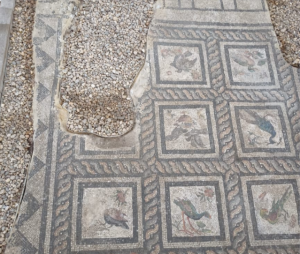
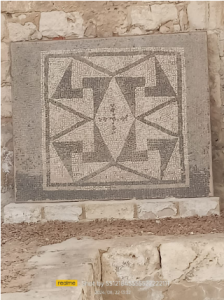 Pictures for Bird Villa
Pictures for Bird Villa
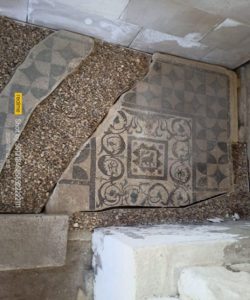
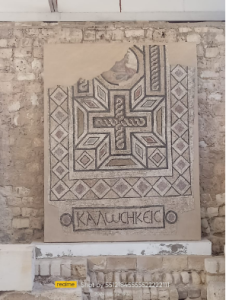 Pictures for Bird Villa
Pictures for Bird Villa
Kom El-Dikka School
A building was discovered in Kom El-Dikka in 1986 AD, consisting of three halls and named the Roman School. It is located northwest of the Kom El-Dikka baths and overlooks the old Roman Theater Street from the west. What remains of the Kom El-Dikka school is the three halls. The central hall is considered the main one and is believed to have been used as classrooms. The second and third halls are considered classrooms, bathrooms, and kitchens. This school indicates the spread of culture and knowledge throughout Alexandria, especially in the Kom El-Dikka area. We found a variety of artistic richness in theaters, baths, villas, and schools from the Roman era.
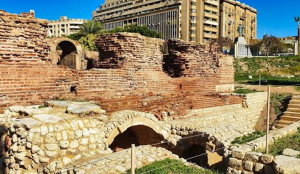
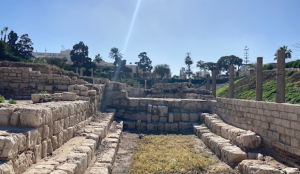 photos illustrating the remaining parts of Kom el-Dikka school
photos illustrating the remaining parts of Kom el-Dikka school

